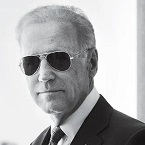Mr. Ed
Posts: 88732
Joined: 7/14/2007
From: Minne-so-ta
Status: offline

|
Hosmer goes to San Diego. "the system is broken" per SI.com
It is undoubtedly good news for Eric Hosmer and his family and associates that he landed with the San Diego Padres late Saturday night for a price of $144 million over eight years. Whether it is good news for anyone else in the game remains a puzzle.
Hosmer, the longtime Royals first baseman and onetime No. 3 overall draft pick, hit the market this offseason with all signs seemingly in his favor: He posted his best season ever in 2017 (an .882 OPS, a Gold Glove, and not a single missed game); he turned just 28 in October; he was repped by Scott Boras and figured to stand out in a weak free-agent class.
First-baseman-needy contenders like the Red Sox and Mariners, though, let his pitch whiz on by. With Hosmer lacking the franchise-resurrecting upside of past top-tier free agents like Robinson Cano or Max Scherzer, and first basemen in general lacking the cachet they enjoyed half a decade ago, most teams sat out the bidding entirely. Hosmer’s market consisted, essentially, of the Royals and Padres. Kansas City wanted to keep a franchise cornerstone even though the team will likely wait years for another playoff run; San Diego went 71-91 in 2017 but expects to contend circa 2020. Neither team stood to lose all that much if he passed.
With such soft demand for Hosmer’s services, the Padres’ $144 million guarantee ($105 million of it reportedly in the first five seasons of the deal before a 2022 opt-out clause) stands out as an old-school Boras swindling. Never mind that Hosmer just isn’t a complete player: Advanced metrics hate his defense; he hits too many ground balls; and he has a pattern of alternating good seasons with dreadful ones. (His OPS+ numbers in 2015 and 2017: 122 and 132. His OPS+ numbers in 2014 and 2016: 99 and 102.) Hosmer debuted in 2011; he ranks 101st among position players in wins above replacement in the seven seasons since.
And yet in spite of all that, the deal was hailed by a number of smart baseball thinkers as a welcome development. They were relieved to see the free-agent gridlock start to break. They were relieved that an owner who receives revenue sharing was spending with the goal of making his team a few wins better— even though those wins weren’t likely to be the difference between a playoff berth and an October spent on the golf course. They were relieved to see money from TV contracts and the league’s digital success end up somewhere other than in owners’ wallets.
Those are all indeed developments worth celebrating, particularly if you possess the pro-labor politics common to most new-school baseball writers. Still, it’s hard to imagine any clearer distillation of, oh, the last 15 to 20 years of advances in baseball analysis than “Don’t pay Eric Hosmer $144 million, and definitely don’t pay Eric Hosmer $144 million if you won’t be a contender in the first or second years of his megadeal, and absolutely definitely don’t pay Eric Hosmer $144 million if you won’t be a contender til’ 2020 and it makes you move Wil Myers to the outfield.” It’s not much of an overstatement to say that sabermetrics exists precisely to dismiss this contract. But here we are.
In the last four months, it has become clearer than ever before that the game’s economics and incentive structures are broken, as Jeff Passan has covered. The Astros tanked their way to a title. Miami gave away the reigning NL MVP. Some of the game’s top free agents are stuck at a Potemkin spring training camp in Bradenton. Teams have too little financial incentive to win, which means they have too little incentive to sign veteran players, which in turn dynamites the players’ association’s longstanding approach to compensation (in which the union signs off on the stiffing of young players so that free agents earn big deals). The results look a lot like collusion, and no owner or general manager has to break any rules to achieve them.
It’s tempting to think of the Hosmer contract as a sign that the player-acquisition climate may yet return to equilibrium. The value of the guarantee looks a lot like something he would have received five or six years ago, when the market appeared to work. But it seems more likely that this development will instead drive baseball’s player-acquisition-and-compensation system a little further toward collapse. An overpaid and declining Hosmer will hamstring the Padres as their prospects mature (he’ll also cost them their third-highest 2018 draft pick), and every team will have yet another data point to deter them from paying veterans top dollar for past performance. Teams and players alike will steer further away from free agency.
In a sensible world, the league and the union would recognize the calamity facing them and work together on a new approach, one that does more to discourage tanking and ties player compensation more closely to performance. Both sides would appreciate reform, and it might bring long-term labor peace. But this is not the world we inhabit. In the world we inhabit, Corey Seager will make about $600,000 in 2018, and Eric Hosmer will make 35 times that, and J.D. Martinez will remain unsigned, and almost half of the league will not be trying to win. And everyone responsible will do their best to pretend that nothing is wrong.
_____________________________
Escape while you can!
|

 Printable Version
Printable Version












 New Messages
New Messages No New Messages
No New Messages Hot Topic w/ New Messages
Hot Topic w/ New Messages Hot Topic w/o New Messages
Hot Topic w/o New Messages Locked w/ New Messages
Locked w/ New Messages Locked w/o New Messages
Locked w/o New Messages Post New Thread
Post New Thread